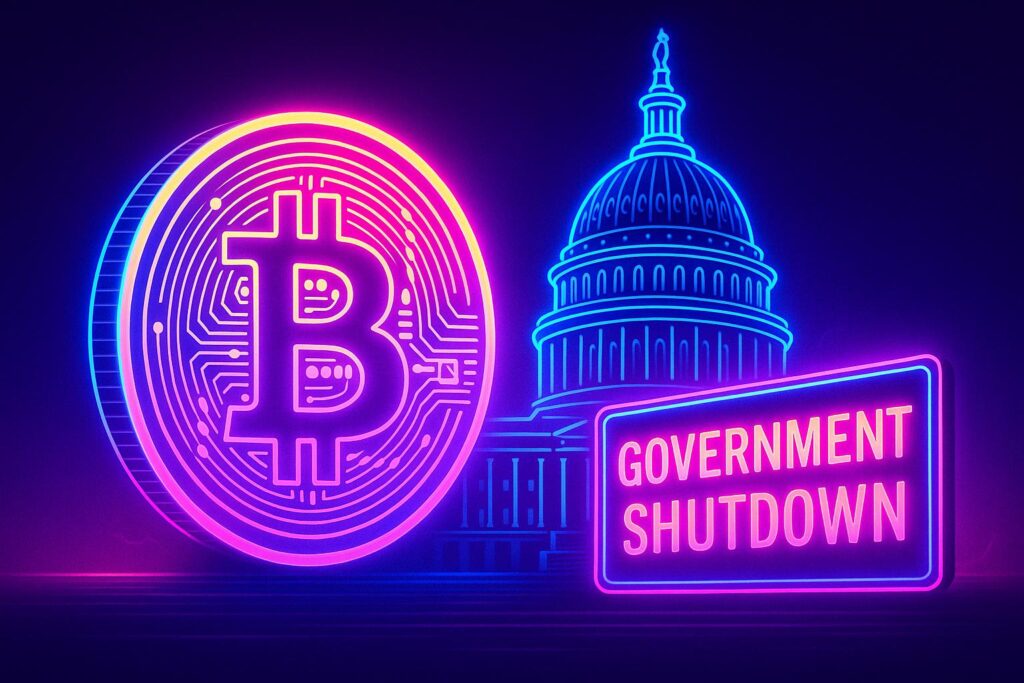In the rapidly evolving world of cryptocurrencies, staying updated on market trends and financial news is crucial for investors and enthusiasts alike. The interplay between politics and economics significantly impacts asset prices, particularly in the digital currency sphere. Understanding these dynamics can offer invaluable insights into potential investment strategies and market movements.
The Impact of U.S. Government Shutdowns on Bitcoin and Cryptocurrency Markets
The political maneuverings in Washington are casting a long shadow over financial markets, with a potential U.S. government shutdown threatening to delay the release of vital economic data. Such data is crucial for institutions like the Federal Reserve to make informed decisions about interest rates. This creates a precarious situation for cryptocurrency investors, as Bitcoin’s price movements are increasingly tied to political developments.
The Political Gridlock Affecting Financial Data Availability
A perennial issue in U.S. politics is the budget stalemate. Without a consensus by the end of September, the government could run out of funds, triggering a shutdown. Such a development would force many government offices to halt operations, including those responsible for compiling critical economic statistics. Key among these are the monthly employment figures, serving as an economic barometer. The absence of such data would deprive investors of essential market signals, leading to speculation and increased market volatility.
Investor Anxiety: A Driver of Market Volatility
The Federal Reserve bases its interest rate decisions on data metrics like employment and wage statistics. Missing information can hinder the Fed’s ability to make timely decisions, leaving investors in a state of uncertainty. Bitcoin and other digital currencies, considered high-risk assets, are particularly sensitive to such market sentiment. Positive economic news can propel digital asset prices higher, while negative news can lead to swift declines.
Current Bitcoin Market Conditions
Recently, Bitcoin surpassed the $114,000 mark, marking a slight upward move of around 4% in just a day. Despite this, its value remains below levels seen two weeks prior, reflecting a cautious market sentiment. Historical government shutdowns offer mixed outcomes for Bitcoin; in 2013, Bitcoin appreciated by 14% over a 16-day shutdown, while in 2018/2019, it depreciated by more than 6%. This underscores that shutdowns can result in both potential gains and losses, contingent on broader market conditions.
Prospects and Risks for Bitcoin
Many market analysts are hopeful for forthcoming interest rate reductions, which could render cryptocurrency investments more appealing compared to traditional savings. Nonetheless, there are warnings about excessive speculative spikes that could be followed by sharp corrections. A looming shutdown exacerbates this risk, with the potential for erratic price movements. Investors, especially newcomers, should approach with caution and not merely chase quick profits.
What History Tells Us About Government Shutdowns and Bitcoin
Examining historical shutdowns reveals the significant influence of prevailing market conditions. In 2013, Bitcoin was experiencing robust growth, and investors used the uncertainty as a buying opportunity, resulting in price hikes. Conversely, in 2018, a weaker market led to withdrawals and falling prices. Current analyses suggest conditions more akin to 2013, with rising Bitcoin demand and a traditionally strong fourth quarter. Yet, political uncertainties remain a daunting unknown.
The Road Ahead for Bitcoin
Whether a shutdown occurs will be determined in the coming days. A congressional agreement could facilitate timely economic data releases, stabilizing markets. Failure to reach a deal could lead to delays and heightened anxiety. Investors face a dual-edged scenario: opportunities for profit if uncertainty spurs buying activity, or steep losses from even minor negative developments. The coming weeks will reveal how intertwined politics and the cryptocurrency market have become.
Unveiling the Future of Bitcoin: Enter Bitcoin Hyper
Bitcoin Hyper ($HYPER) is set to revolutionize the blockchain landscape by enhancing the speed and reducing the cost of Bitcoin transactions via a sophisticated Layer-2 solution. This innovation promises lightning-fast transactions, affordable fees, and support for smart applications traditionally seen on platforms like Solana.
Innovations and Advantages of Bitcoin Hyper
At the core of Bitcoin Hyper is the Canonical Bridge, which facilitates secure BTC transactions between the Bitcoin blockchain and Solana’s network. This allows BTC to not only be held but also utilized in decentralized finance (DeFi), gaming, and payment applications without compromising its security. $HYPER serves as more than a token; it powers transactions, offers staking rewards, and grants governance rights within the network. With a transparent presale process and no insider deals, Bitcoin Hyper combines Solana’s speed with Bitcoin’s security, making it an attractive proposition for investors amid growing institutional interest in cryptocurrency.
Is Bitcoin a good hedge against economic instability?
Bitcoin is often viewed as a hedge against economic instability due to its decentralized nature and limited supply. However, its high volatility means it should be considered as part of a diversified investment strategy rather than a sole protective asset.
How do interest rate changes affect Bitcoin prices?
Interest rate changes impact liquidity and investor sentiment. Lower rates generally increase market liquidity and can boost investment in riskier assets like Bitcoin, while higher rates do the opposite, potentially depressing prices.
What role does Bitcoin Hyper play in the cryptocurrency ecosystem?
Bitcoin Hyper is enhancing Bitcoin’s utility by integrating it with DeFi and other applications while ensuring security. This development could increase Bitcoin’s adoption and value, offering investors additional opportunities.

